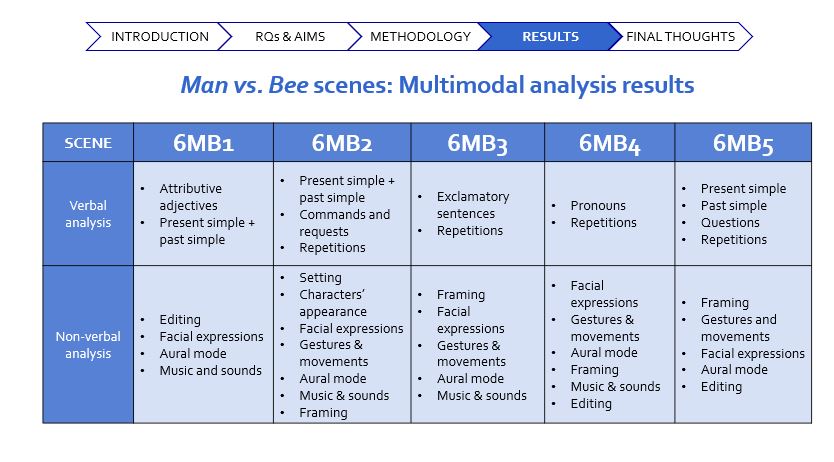IVACS2024: Paula Wood-Borque explores the compilation of a multimodal corpus

Paula Wood-Borque was one of our PhD candidates that participated in the IVACS biennial conference (more information on this event here) on the 16th and 17th of July at the University of Cambridge.
Paula’s paper was titled “Development of materials for the English as a Foreign Language classroom: Compilation and analysis of a multimodal corpus”. As part of her paper, she presented her corpus of scenes and series for the EFL Secondary Education classroom CAMELLS, and shared its process of compilation. She then explained the analytical framework she uses to carry out a multimodal analysis of the scenes in CAMELLS, and shared the analysis results of 5 scenes from the series Man vs. Bee. By determining the salient verbal and non-verbal features of each scene, she is able to create suitable exploitation suggestions that aim at developing students’ multimodal communicative competence.
All in all, in this presentation Paula argued that there is a current need to compile multimodal corpora of audiovisual materials for the EFL classroom that can be used as an informed source for the creation of materials to improve students’ multimodal communicative competence and skills.
The abstract of her talk can be consulted as follows:
Development of materials for the English as a Foreign Language classroom: Compilation and analysis of a multimodal corpus
It is well attested that human communication is essentially multimodal, as we orchestrate different modes to make meaning, especially nowadays with the rapid advancement in communication technologies and the media (Donaghy 2019). Because of this reason, there is a need to bring multimodal resources in the foreign language classroom to develop students’ multimodal communicative competence (Royce 2006).
Audiovisual materials such as films and series are multimodal resources, as they combine different modes (linguistic, aural, visual, gestural, spatial) to communicate. Due to their multimodal nature, and because of their many benefits as a source of simulated naturalistic speech (Bednarek 2018), they can constitute a valid, rich source on which to develop materials for foreign language teaching. It will be argued that there is a need to compile multimodal corpora (Allwood 2009) of audiovisual materials such as films and series to be used as an informed source for the creation of materials to improve students’ multimodal communicative competence in the English as a Foreign Language (EFL) Secondary Education classroom.
In this paper I will present a multimodal corpus of scenes from films and series in English, named CAMELLS (Corpus of Audiovisual Materials for English Language Learning in Secondary), and its process of compilation. The results from the multimodal analysis of 5 scenes from a film in CAMELLS will be presented in order to illustrate how the corpus can be used for the design of materials to be brought to the EFL classroom. In particular, I will examine the scenes’ salient verbal and non-verbal features in order to convey certain meanings and meet specific communicative purposes and how to draw students’ attention to them. It will be argued that the results obtained should inform the scenes’ exploitation in the classroom to develop students’ multimodal communicative competence.
References:
Allwood, J. (2009). Multimodal corpora. In Lüdeling, Anke & Kytö, Merja (eds.). “Corpus Linguistics. An International Handbook.” Mouton de Gruyter: Berlin. (207-225).
Bednarek, M. (2018). “Language and Television Series: A Linguistic Approach to TV Dialogue.” Cambridge: Cambridge University Press.
Donaghy, K. (2019). Using film to teach languages in a world of screens. In Herrero, Carmen & Isabelle Vanderschelden (eds.). “Using film and media in the language classroom:
Reflections on research-led teaching.” Multilingual Matters. (3-19) Royce, Terry D. (2006). Multimodal communicative competence in Second Language contexts. In Royce, Terry D. & Wendy Bowcher (eds.). “New directions in the analysis of multimodal discourse.” New York: Routledge. 361-390.
